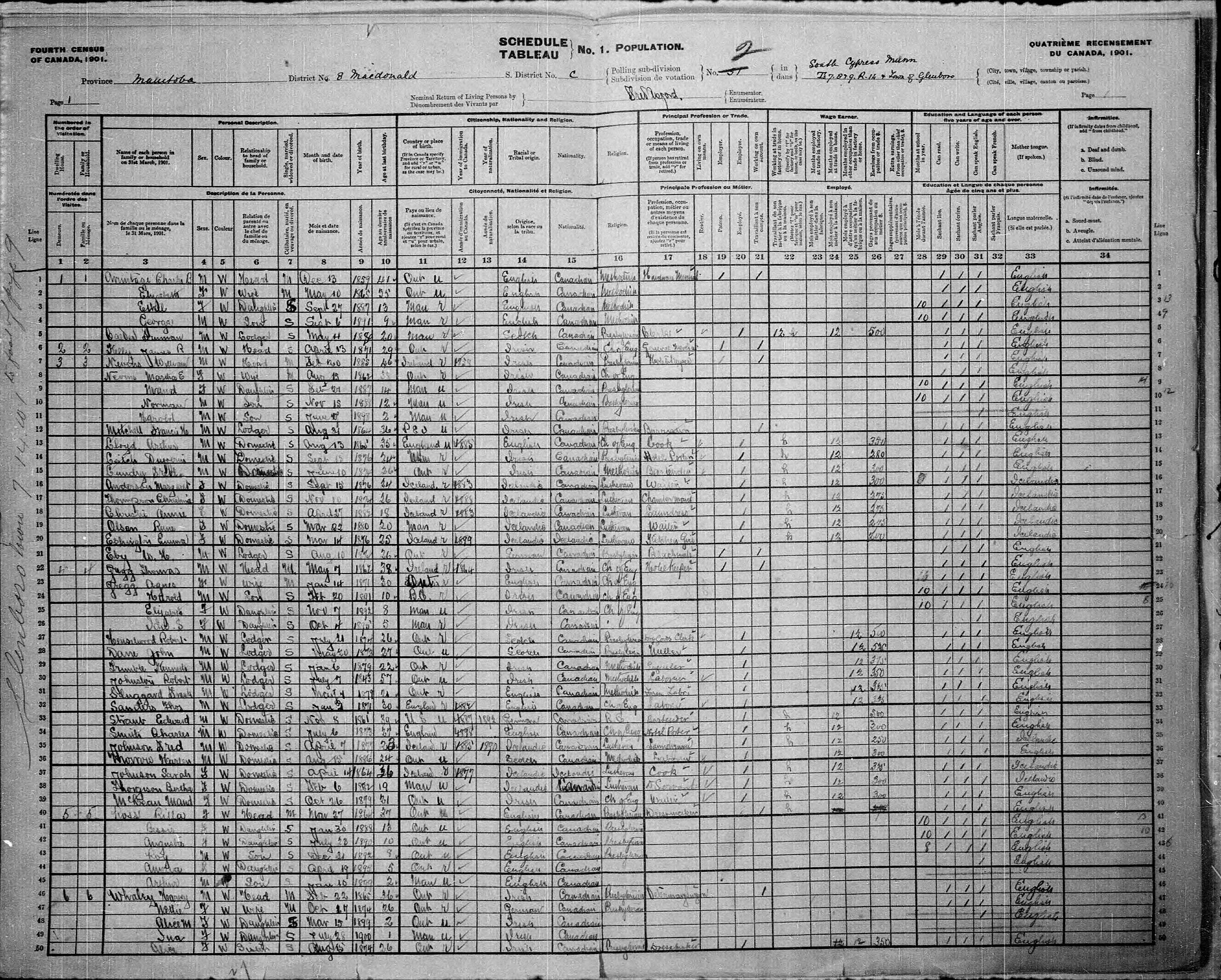Information From Schedule 1
Schedule 1: Nominal Return of the Living
The 1901 Census of Canada provides a rich source of information on the size and characteristics of the historical Métis population in the post-1870 era. The 1901 Census data represented in the Historical Online Database has been derived from microfilmed copies of the 1901 Census “Schedule 1,” also referred to as the Nominal Return of the Living, which lists each person individually by name and provides details as to age, sex, place of birth, etc. (“Schedule 2” pertains to housing and building information). Usually, the head of the family or household was listed first and family members and other relations were listed thereafter. Each family or household was given dwelling and family numbers, which were then numbered consecutively throughout the sub-district.
For the purpose of this database, information from Schedule 1 documents was entered into Microsoft Excel spreadsheets, verified for accuracy, and then uploaded to the Historical Online Database. As more than one version of Schedule 1 was used for the 1901 Census enumeration, researchers created and entered data into specialised spreadsheet templates that have been customised according to which version of Schedule 1 was used by the Census enumerators in a particular area.
The 1901 Census data available in the Online Database only represents individuals whose “Racial or Tribal Origin” was listed as “Breed” or “Red” (off reserve) and/or the families (including domestics, lodgers, and borders) of these individuals.[1] Enumerators were instructed to identify not only a person’s “race” but, in the case of Aboriginal people, also their particular tribal and/or national affiliation. An excerpt of the original 1901 Census instructions pertaining to Schedule 1 provides insights into inter-racial or inter-cultural marriages:
"Among whites the racial or tribal origin is traced through the father, as in English, Scotch, Irish, Welsh, French, German, Italian, Scandinavian, etc. Care must be taken, however, not to apply the terms “American” or “Canadian” in a racial sense, as there are no races of men so called. “Japanese,” “Chinese” and “negro” are proper racial terms; but in the case of Indians the names of their tribes should be given, as “Chippewa,” “Cree,” etc. Persons of mixed white and red blood – commonly known as “breeds” – will be described by addition of the initial letters “f.b.” for French breed, “e.b.” for English breed, “s.b.” for Scotch breed and “i.b.” for Irish breed. For example: “Cree f.b.” denotes that the person is racially a mixture of Cree and French; and “Chippewa s.b.” denotes that the person is Chippewa and Scotch. Other mixtures of Indians besides the four above specified are rare, and may be described by the letters “o.b.” for other breed. If several races are combined with the red, such as English and Scotch, Irish and French, or any others, they should also be described by the initials “o.b.” A person whose father is English, but whose mother is Scotch, Irish, French, or any other race, will be ranked as English, and so with any others – the line of descent being traced through the father in the white races."[2]
As much as possible, researchers entering the data found on the Historical Online Database have endeavoured to maintain the original terminology of the 1901 Census. However, users of this data should be aware that historical meanings of words do not necessarily apply to their present-day context.
Example of a Schedule 1 Document:

[1901 Census Return Schedule 1, Sault St. Marie Town. SOURCE: LAC RG 31, Microfilm Reel T-6457.]
[1] The exception to this was if the majority of people within a small community were listed as “Breed” or “red,”
in which case the entire community was captured.
[2] Census of Canada: 1901, vol. 1, p. xviii.